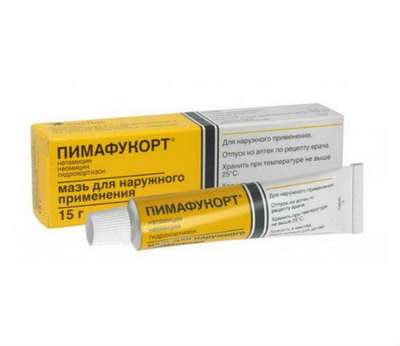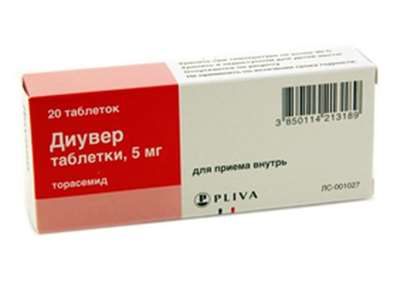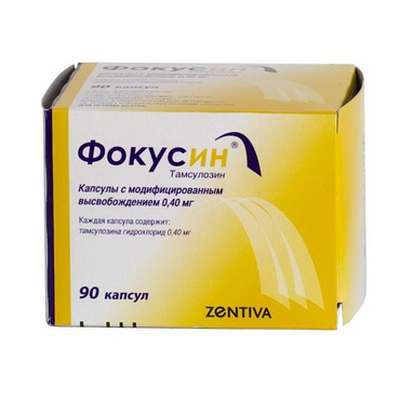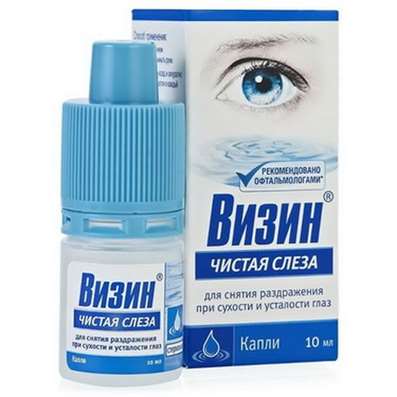Instruction for use: Ustekinumab
I want this, give me price
Trade name of the drug – Stelara
The Latin name of the substance Ustekinumab
Ustekinumabum (genus. Ustekinumabi)
Gross Formula
C6482H10004N1712O2016S46
Pharmacological group:
Immunosuppressive drugs
The nosological classification (ICD-10)
L40.0 Psoriasis vulgaris: Psoriatic plaque; Vulgar psoriasis; Psoriasis vulgaris; Chronic vulgar plaque psoriasis
L40.5 Arthropathy psoriasis (M07.0-M07.3 *, M09.0 *): Psoriatic arthritis; Arthropathic form of psoriasis
M07.3 Other psoriatic arthropathies (L40.5 +): Psoriatic arthritis; Generalized form of psoriatic arthritis; Psoriatic arthritis
CAS code
815610-63-0
Characteristics of the substance Ustekinumab
Human monoclonal antibodies of class IgG1k with a molecular weight of about 148600 Da, produced by the recombinant cell line and having undergone standard biotechnological purification, including the stages of inactivation and removal of viral particles.
Pharmacology
Mode action - Immunosuppressive, antipsoriatic.
Pharmacodynamics
Mechanism of action. Ustekinumab has a high specificity for the p40 subunit of IL-12 and IL-23. It blocks the biological activity of IL-12 and IL-23, preventing the binding of p40 to the IL-12R-β1 receptor expressed on the surface of immune cells. Ustekinumab does not interact with IL-12 and IL-23 bound to the IL-12R-β1 receptor, so its effect on the complement or antibody-dependent cytotoxicity of cells expressing IL-12 and / or IL-23 receptors is unlikely.
IL-12 and IL-23 are heterodimeric cytokines that are secreted by activated antigen-presenting cells, in particular macrophages and dendritic cells. IL-12 activates NK cells, stimulates differentiation of CD4 + T cells to T-helpers 1 (Th1), and also increases the production of interferon gamma. IL-23 stimulates the formation of T-helpers 17 (Th17) and increases the secretion of IL-17A, IL-21 and IL-22. Levels of IL-12 and IL-23 are elevated in blood and skin in patients with psoriasis. The concentration of IL-12 / 23p40 in the serum is a fact of differentiation of patients with psoriatic arthritis, which confirms the participation of IL-12 and IL-23 in the pathogenesis of psoriatic diseases. Polymorphism of genes encoding IL-23A, IL-23R and IL-12B, determines predisposition to such diseases. In addition, the IL-12 and IL-23 genes have increased expression in psoriatic affected skin, and the IL-12-induced production of interferon gamma is directly proportional to the severity of the psoriatic disease. IL-23-sensitive T cells were detected in enteroses on mouse models of inflammatory arthritis, in which IL-23 caused enteric inflammation.
Ustekinumab shows clinical efficacy in psoriasis and psoriatic arthritis by binding the p40 subunit of IL-12 and IL-23 and disturbing the production of Th1 and Th17 cytokines, which are the key links in the pathogenesis of these diseases.
Pharmacological effect. The use of ustekinumab leads to a significant weakening of the histological manifestations of psoriasis, including hyperplasia and proliferation of epidermal cells. These data are consistent with clinical efficacy.
In patients with psoriasis and / or psoriatic arthritis, ustekinumab does not significantly affect the ratio of circulating immune cells in the blood, including memory cells and non-activated T cells, as well as the concentration of cytokines in the blood. The concentration of systemic inflammatory markers in patients taking usxinumab is within normal limits, and the 4 marker indicators (MDC, VEGF, MCSF-1 and YKL-40) are slightly different from those in the placebo group.
Analysis of mRNA isolated from biopsy specimens of skin lesions of psoriasis prior to application and after 2 weeks of treatment showed that the use of ustekinumab led to a decrease in the expression of genes encoding its molecular targets-IL-12 and IL-23, as well as genes encoding inflammatory cytokines And chemokines - monocyte chemotactic factor-1 (MCP-1), TNF-alpha, interferon gamma inducible protein-10 (IP-10) and IL-8. These data are consistent with the significant clinical effect of treatment in patients with psoriasis.
The clinical effect of treatment of psoriasis and psoriatic arthritis, apparently, depends on the concentration of ustekinumab in the blood plasma. In patients with psoriasis with a better score on the scale of psoriasis and the severity of psoriasis (PASI), the mean plasma concentration of ustekinumab was higher than in patients with less clinical effect. In general, the proportion of patients with a PASI improvement of 75% increased as the concentration of ustekinumab increased in plasma. Patients with psoriatic arthritis who achieved an ACR score of 20 on the scale of the American College of Rheumatology (ACR) have a higher average concentration of ustekinumab in plasma compared to patients who did not respond to treatment. The number of patients with psoriatic arthritis, who achieved an improvement in the ACR 20 and ACR 50 scales, increased as the concentration of ustekinumab in the blood plasma increased.
Immunization. In a long-term Phase III clinical trial, patients receiving usxinumab for at least 3.5 years developed an immune response similar to that of a control group of patients with psoriasis but not systematically treated with a vaccine containing pneumococcal polysaccharide or tetanus toxoid vaccine .
Approximately the same number of patients receiving treatment with ustekinumab and patients from the control group achieved a protective concentration of anti-pneumococcal and tetanus antibodies. The antibody titres were also approximately the same.
Pharmacokinetics
Suction. The mean Tmax in the blood plasma after a single administration of 90 mg of ustekinumab to healthy volunteers was 8.5 days. In patients with psoriasis, this value at doses of 45 or 90 mg was comparable to that of healthy volunteers.
Absolute bioavailability of ustekinumab after a single administration to patients with psoriasis was 57.2%.
Distribution. The average value of Vd of ustekinumab in the terminal elimination phase after a single intravenous administration to patients with psoriasis ranged from 57 to 83 ml / kg.
Metabolism. The metabolic pathway of ustekinumab is unknown.
Excretion. The average value of systemic clearance of ustekinumab after a single intravenous administration to patients with psoriasis ranged from 1.99 to 2.34 ml / day / kg. The mean T1 / 2 of ustekinumab in patients with psoriasis and / or psoriatic arthritis was approximately 3 weeks and varied from 15 to 32 days in different studies.
Linearity. Systemic exposure of ustekinumab (Cmax and AUC) in patients with psoriasis increased in proportion to the administered doses after a single intravenous dose in the range of 0.09 to 4.5 mg / kg, and after a single dosing of doses ranging from 24 Up to 240 mg.
The change in the concentration of ustekinumab in the blood plasma over time after single or repeated repeated administrations was largely predictable. Css ustekinumab in blood plasma is achieved by the 28th week with the proposed regimen of therapy (second injection 4 weeks after the first application, then every 12 weeks). On average, Css in patients with psoriasis is 0.21-0.26 μg / ml for a dose of 45 mg and 0.47-0.49 μg / ml for a dose of 90 mg. Serum cumulation of ustekinumab was not observed during the treatment with a dosage regimen of 1 injection every 12 weeks.
The effect of the patient's body weight on the pharmacokinetics. The concentration of ustekinumab in the blood plasma depends on the body weight of the patient with psoriasis and / or psoriatic arthritis. When the same doses (45 or 90 mg) were administered in patients with a body weight of more than 100 kg, the average concentration of ustekinumab in the plasma was less than in patients weighing less than 100 kg. However, the mean Cmin of ustekinumab in the blood plasma of patients weighing more than 100 kg administered with a dose of 90 mg was comparable to that in the group of patients weighing less than 100 kg administered with a dose of 45 mg.
Population pharmacokinetic analysis. According to the data obtained in patients with psoriasis, the apparent clearance (CL / F) and Vd (V / F) were 0.465 l / day and 15.7 l, respectively. T1 / 2 ustekinumab was approximately 3 weeks. Sex, age and race status did not affect CL / F. The CL / F of ustekinumab was influenced by the patient's body weight, while in patients with a larger body weight the CL / F value was greater. Mean CL // F in patients with a body weight of more than 100 kg was approximately 55% higher than that in patients with a lower body weight. V / F in patients with a body weight of more than 100 kg was approximately 37% higher than that in patients with a lower body weight. Similar results were obtained with confirmatory analysis of population data among patients with psoriatic arthritis.
The effect of comorbid conditions (diabetes mellitus, hypertension, hyperlipidemia) on the pharmacokinetics of ustekinumab in patients with psoriasis was analyzed. In patients with diabetes, CL / F was an average of 29% higher than in healthy patients.
Population pharmacokinetic analysis showed that there is a tendency to increase the clearance of ustekinumab in patients with a positive immune response.
Special patient groups
Children from 12 to 18 years. The pharmacokinetics of ustekinumab in children aged 12 to 18 years with psoriasis receiving the recommended dose is comparable to the pharmacokinetics in adult patients with psoriasis.
Elderly patients (65 years and older). Studies of pharmacokinetics in elderly patients have not been conducted. Population pharmacokinetic analysis of patients older than 65 years did not reveal the influence of age on the values of CL / F and V / F.
Impaired renal function. Data on the pharmacokinetics of ustekinumab in patients with impaired renal function are absent.
Violation of the function of the liver. Data on the pharmacokinetics of ustekinumab in patients with impaired liver function are absent.
Other groups of patients. Pharmacokinetics of ustekinumab in patients with psoriasis is comparable in populations of Asian and non-Asiatic origin.
The use of alcohol or tobacco did not affect the pharmacokinetics of ustekinumab.
Application of the substance Ustekinumab
Plaque psoriasis is treatment of adults and children aged 12 to 18 years with moderate or severe degree of plaque psoriasis in the absence of treatment effect or in the presence of contraindications, or with intolerance to other methods of systemic therapy or phototherapy.
Psoriatic arthritis - treatment of patients older than 18 years with active psoriatic arthritis as a monotherapy or in combination with methotrexate.
Contraindications
Clinically significant hypersensitivity to ustekinumab; Serious infectious diseases in the acute phase, incl. tuberculosis; Malignant neoplasms; pregnancy; lactation; Children under 12 years of age (as indicated by plaque psoriasis), up to 18 years of age (as indicated by psoriatic arthritis).
Restrictions
Chronic or recurrent parasitic and infectious diseases of a viral, fungal or bacterial nature; Malignant tumors in the anamnesis; elderly age.
Pregnancy and breast-feeding
During the study, animals were given a dose of ustekinumab, 45 times higher than the recommended clinical dose for humans, with no evidence of teratogenicity, congenital anomalies, or developmental lag. However, the results of animal studies are not always applicable to humans.
It is not known whether ustekinumab, when used in pregnant women, can lead to adverse effects on the fetus or affect reproductive function. Adequate and strictly controlled studies in pregnant women were not conducted.
The use of ustekinumab during pregnancy is contraindicated. During treatment and for 15 weeks after treatment, effective methods of contraception should be used.
Studies in monkeys have shown that ustekinumab is excreted in breast milk. It is not known whether Ustekinumab is absorbed systemically after absorption. Because many drugs and Ig are excreted in breast milk and ustekinumab can cause adverse reactions in infants, a decision should be made to stop breastfeeding during treatment or to cancel treatment with ustekinumab.
Side effects of Ustekinumab
Adverse effects in adult patients
The most frequent adverse events (> 5%) in controlled clinical trials of ustekinumab in psoriasis and psoriatic arthritis were nasopharyngitis, headache and upper respiratory tract infections. Most of these phenomena were mild and did not require discontinuation of treatment.
Side effects of ustekinumab are systematized relative to each of the organ systems depending on the frequency of occurrence using the following classification: very often (≥1 / 10); Often (≥1 / 100, <1/10); Infrequently (≥1 / 1000, <1/100); Rarely (≥1 / 10000, <1/1000); Very rarely (<1/10000), including isolated cases.
Infectious and parasitic diseases: often - odontogenic infections, upper respiratory tract infections, nasopharyngitis; Infrequently - inflammation of subcutaneous fat, shingles, viral infections of the upper respiratory tract.
In placebo-controlled studies in patients with psoriasis and / or psoriatic arthritis, the incidence of infection and serious infection with ustekinumab and placebo was the same (incidence of infection was 1.27 and 1.17, the incidence of serious infections was 0.01 (5/616 ) And 0.01 (4/287) cases per man-year of treatment, respectively).
In controlled and uncontrolled clinical trials in patients with psoriasis and psoriatic arthritis, the incidence of infections with ustekinumab was 0.86 cases per person-year of treatment. The incidence of serious infection was 0.01 cases per person-year of treatment (107/9848). Serious infections included diverticulitis, inflammation of subcutaneous fat, appendicitis, cholecystitis and sepsis.
Disorders of the psyche: infrequently - depression.
From the nervous system: often - dizziness, headache; Infrequently - lesion of the facial nerve.
On the part of the respiratory system, chest and mediastinum: often - oropharyngeal pain; Infrequent - nasal congestion.
From the gastrointestinal tract: often - diarrhea, vomiting, nausea.
From the skin and subcutaneous tissues: often - itching; Infrequently - skin peeling; Rarely - exfoliative dermatitis.
From the musculoskeletal system and connective tissue: often - back pain, myalgia, arthralgia.
General disorders and reactions at the injection site: often - fatigue, erythema at the injection site, pain at the injection site; Infrequently - reactions at the injection site (including hemorrhage, hematoma, tightness, swelling and itching).
Description of some adverse reactions
Malignant tumors. In three clinical placebo-controlled trials in patients with psoriasis and psoriatic arthritis, the incidence of malignant tumors (not including non-melanoma skin cancer) in patients receiving ustinulinab and placebo was 0.16 (1/615) and 0.35 (1 / 287) per 100 person-years respectively. The incidence of skin cancer other than melanoma with ustekinumab and placebo was 0.65 (4/615) and 0.7 (2/287) per 100 person-years, respectively. The incidence of malignant tumors in patients receiving ustekinumab was comparable to the incidence of tumors in the general population.
Most often, in addition to non-melanoma skin cancer, malignant tumors of the prostate, intestines, mammary glands and melanoma were observed.
The incidence of non-melanoma skin cancer in patients receiving ustekinumab was 0.61 cases per 100 person-years (41/6770).
Hypersensitivity reactions. In clinical trials, rash and urticaria have been observed in less than 1% of patients.
Immunogenicity. Approximately 6% of patients with psoriasis and psoriatic arthritis who received usxinumab formed antibodies to ustekinumab, which usually had a low titer. There was no clear correlation between the formation of antibodies and the presence of reactions at the injection site. In the presence of antibodies to ustekinumab, patients often had a lower efficacy of ustekinumab, although the presence of antibodies does not preclude the achievement of a clinical effect. Most patients with psoriasis who had antibodies to ustekinumab also had antibodies that neutralized such antibodies.
Side effects in children
The safety of ustekinumab was studied in 110 patients aged 12 to 18 years with a duration of therapy up to 60 weeks. Undesirable reactions observed in children are similar to those in adults.
Undesirable phenomena revealed in the post-marketing period
From the immune system: infrequently - hypersensitivity reactions (including rash and hives); Rarely serious reactions of hypersensitivity (including anaphylaxis and angioedema).
From the skin and subcutaneous tissue: infrequently - pustular psoriasis; Rarely - psoriatic erythroderma.
Interaction
Studies of drug interactions in humans have not been conducted.
Effects of IL-12 and IL-23 on CYP450 enzymes were studied in vitro on human hepatocytes. The study showed that IL-12 and / or IL-23 at a concentration of 10 ng / ml did not affect the enzymes CYP450 (CYP1A2, CYP2B6, CYP2S9, CYP2S19, CYP2D6 or CYP3A4). The results do not suggest the need for dose adjustment in patients receiving ustekinumab in conjunction with drugs metabolized by the CYP450 enzymes.
Do not use vaccines containing weakened pathogens of infectious diseases, concomitantly with ustekinumab.
With the joint use of ustekinumab and such drugs as paracetamol, ibuprofen, acetylsalicylic acid, metformin, atorvastatin, naproxen, levothyroxine and hydrochlorothiazide, no interaction was found. The safety and effectiveness of the joint use of ustekinumab with other immunosuppressants (methotrexate, cyclosporine) or biological agents for the treatment of psoriasis has not been evaluated.
Overdose
At the time of clinical studies, patients once / in doses of up to 6 mg / kg administered without the development of dose-limiting toxicity. In case of an overdose, it is recommended to monitor the patient's condition to identify signs and symptoms of side effects and, when they develop, immediately begin appropriate symptomatic therapy.
Routes of administration
SC.
Precautionary measures
Infections
Ustekinumab is a selective immunosuppressant and may increase the risk of infections and the reactivation of infections in the latent phase.
In clinical trials with ustekinumab, patients experienced serious bacterial, fungal and viral infections. Ustekinumab should not be used in patients with clinically relevant active infections. Caution should be exercised when using ustekinumab in patients with chronic infections or the presence of recurrent infections in the anamnesis. Before starting ustekinumab, we should test for tuberculosis. Do not use ustekinumab in patients with active tuberculosis. In the presence of latent or active tuberculosis (including in the anamnesis) it is necessary to begin its treatment before the application of utekinumab. It is also necessary to begin treatment of tuberculosis in patients who have not been confirmed to have sufficient effect from their previous treatment. During the treatment with usekinumab and after this, patients should be closely monitored to identify signs and symptoms of active tuberculosis.
Patients should be warned about the need to see a doctor if signs and symptoms appear that suggest infection. With the development of a serious infection, the use of ustekinumab should be canceled, the patient must be under the control of medical personnel. Do not use ustekinumab until after the treatment of the infection.
Malignant neoplasms
Ustekinumab is a selective immunosuppressant. Immunosuppressants can increase the risk of developing malignant tumors. In some patients who received ustekinumab in clinical studies, malignant neoplasms (cutaneous and non-dermal forms) were observed.
The use of ustekinumab has not been studied in patients with malignant tumors in the anamnesis. Caution should be exercised in prescribing ustekinumab to patients with malignant tumors in the anamnesis, as well as when considering continuation of treatment with ustekinumab in patients with diagnosed malignant neoplasms.
In all patients over the age of 60 years, and also previously received long-term therapy with immunosuppressants or UV radiation, it is necessary to conduct a check for non-melanoma skin cancer.
Hypersensitivity reactions
In the post-marketing application of ustekinumab, cases of serious hypersensitivity reactions are known, including angioedema and anaphylaxis. With the development of anaphylactic and other serious hypersensitivity reactions, the use of ustekinumab should be stopped immediately and appropriate treatment prescribed.
Vaccination
Do not vaccinate the patient with live vaccines during treatment with ustekinumab, and also during the 15 weeks before vaccination (after the last dose of ustekinumab) and 2 weeks after vaccination.
Data on secondary infection with the use of live vaccines in patients receiving ustekinumab are absent. Caution should be exercised when using live vaccines to immunize family members of the patient receiving usxinumab because there is a risk of virus or bacterial excretion and transmission of infection from these individuals to patients.
Long-term treatment with ustekinumab does not inhibit the humoral immune response to vaccines containing pneumococcal polysaccharide and tetanus toxoid vaccine.
With usxinumab, vaccines containing inactivated microorganisms can be used, but the induced immune response may not be sufficient to prevent the disease.
Concomitant immunosuppressive therapy
The safety and efficacy of ustekinumab in combination with immunosuppressive drugs and phototherapy has not been studied in patients with psoriasis. In studies in patients with psoriatic arthritis, combined use with methotrexate did not affect the safety and efficacy of ustekinumab. Caution should be exercised when considering the possibility of concomitant use of other immunosuppressants and ustekinumab, as well as in switching from therapy to another antipsoriatic biological agent to ustekinumab therapy.
Immunotherapy
The safety and efficacy of ustekinumab in patients who underwent immunotherapy for allergic diseases have not been established. Caution should be exercised in patients undergoing or undergoing immunotherapy for allergic diseases, especially anaphylactic conditions.
Influence on the ability to drive vehicles and work with machinery. Studies have not been conducted.

 Cart
Cart





